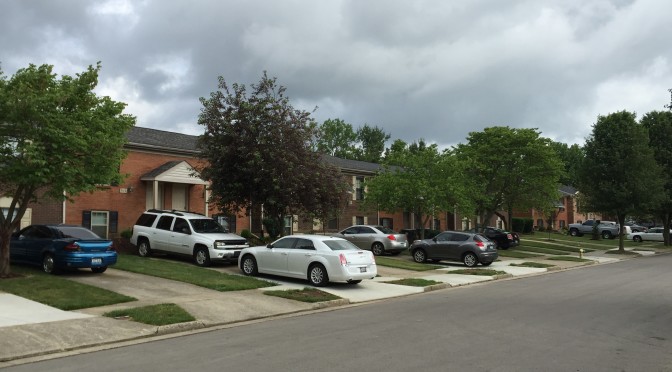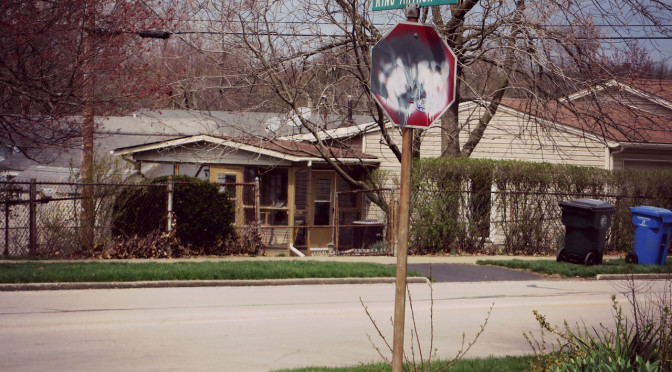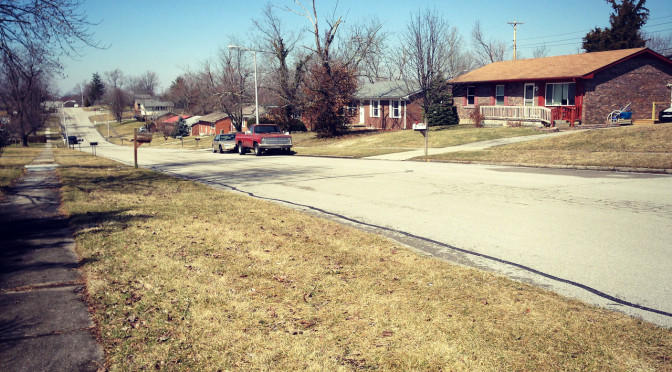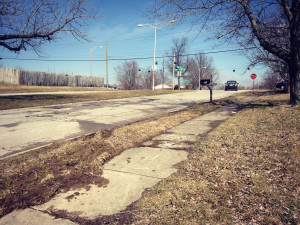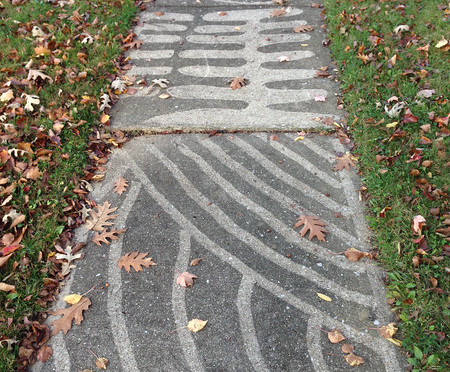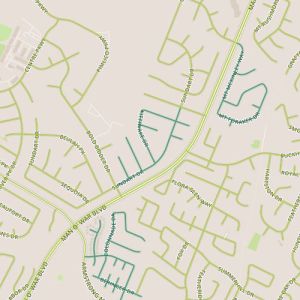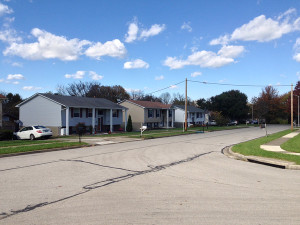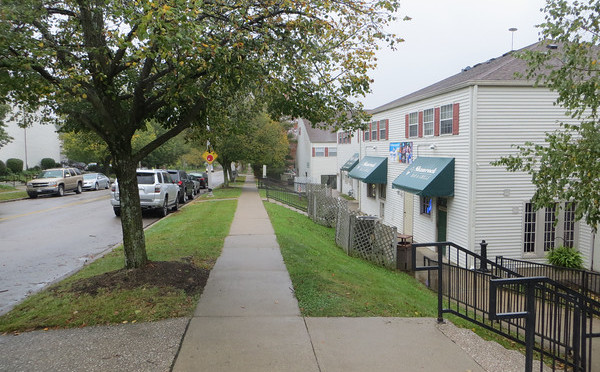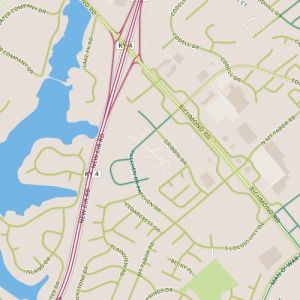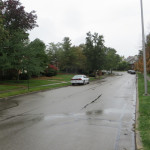[load]
Day 94 brought me to two neighboring subdivisions, King Arthur, and Brigadoon, located along Wilson Downing between Nicholasville Road and Tates Creek Road. The former consists of small, mid 1960’s era ranch houses while the latter is slightly older with generally larger houses.
Much as I like to use this project to highlight the little things I like, there are a whole host of things that I think could stand to be fixed. Today’s walk offers a good opportunity to talk about a few of these. Of course, this era of development is consistently car-oriented but this area shows it particularly clearly. Camelot Road, which seems to be serve primary to shunt traffic from the neighborhood between Wilson Downing and Laredo, which then direct traffic out to arterial routes such as Nicholasville and Tates Creek. Yet this road is given two lanes in each direction along with a median, at the intersection with Tates Creek. It’s hard to judge this without seeing it at a peak period but it feels like overkill and makes for a very wide 70 foot crossing. One measure of a street is corner radius, the radius of the curve between the edges (in many cases, the curbs) of intersecting streets. A larger radius means a more gentle curve. Cars have to slow down less to navigate the turn, but the edges of the street become farther away at the corners resulting in longer crossings distances for pedestrians. Here, the corner radii are about 25 feet, far greater than they need to be in a residential area with 25 mph speed limits. Since the large curb radii here allow cars to navigate turns at higher speeds while making pedestrians spend longer in the street, they make walking incrementally less safe. Curb radii throughout Lexington tend to be on the large size. The National Association of City Transportation Officials recommends that turning radii greater than 15 feet should “be the exception”. But the 25 foot radii in King Arthur are smaller than the radii in some newer neighborhoods, a sign that streets are over-engineered. In the case of Camelot, steep hills and curves decrease visibility, and crossing even this small street can get your adrenaline pumping.
A final observation of the quality of pedestrian experience is that the portion of Wilson Downing that is located behind the King Arthur neighborhood (and across from two schools) is neglected–spaces like it that aren’t fronted by any buildings often are. The sidewalk was uneven, covered in mud in places and trash in most places including plenty of broken glass. Particularly because of its proximity to the schools, I hope neighbors can find a way to improve this section of sidewalk!
